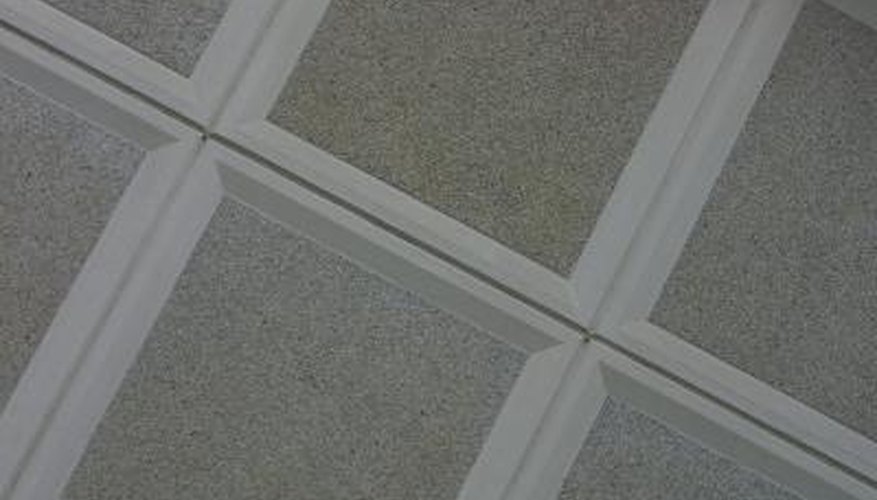Suspended ceilings go up fast and easy to cover the ceiling joists without the mess or hassle of drywall. The point where a stairwell enters a room from a floor above, such as in a basement, presents a problem. The bottom of the ceiling joists meet the finished front stairwell wall and the ceiling grid and tiles hang below the joists. This leaves an ugly gap between the ceiling tiles and the top of the stairwell. Prepare the gap for the suspended ceiling before you start the grid installation.
- Suspended ceilings go up fast and easy to cover the ceiling joists without the mess or hassle of drywall.
- Prepare the gap for the suspended ceiling before you start the grid installation.
Measure the distance between the top of the stairwell opening and the bottom of the ceiling tiles. Set the table saw fence to the distance measured and the blade height to 1 inch. Start the saw and guide the medium-density fiberboard, or MDF, through the blade with one edge against the fence.
Hold the MDF against the top of the stairwell opening with both ends overlapping walls. Mark a line on each end of the MDF where the MDF meets the stairwell side walls. Cut the MDF on the lines. The MDF will almost fit snugly between the two side walls and against the bottom of the front stairwell wall.
- Hold the MDF against the top of the stairwell opening with both ends overlapping walls.
- Mark a line on each end of the MDF where the MDF meets the stairwell side walls.
Measure and cut the 1-by-4-foot board 6 inches longer than the MDF piece. Lay the board on top of the MDF with each end overlapping the MDF by 3 inches and the top edge of the board flush with the top edge of the MDF. Drill countersunk pilot holes every 8 inches through the board into the MDF, but do not drill all the way through. Screw the board to the MDF with 1 1/4-inch drywall screws.
Fit the assembled board and MDF into the stairwell opening with the board overlapping the sidewalls and the MDF between the sidewalls. Drill two pilot holes in each end of the 1-by-4-foot board and into the stud on each side wall. Screw the board to the side wall using 1 1/2-inch screws.
Apply a bead of latex caulk at the juncture of the MDF and the side walls, and where the MDF meets the bottom of the front stairwell wall. Smooth the caulk with your finger and give it time to dry -- you will want to wait at least 24 hours.
Place the wall angle across the front of the MDF piece with the bottom edge of the wall angle aligned with the bottom edge of the MDF. Drill pilot holes in the wall angle for the sheet metal screws, but do not drill all the way through the MDF. Screw the wall angle to the MDF with the sheet metal screws.
- Fit the assembled board and MDF into the stairwell opening with the board overlapping the sidewalls and the MDF between the sidewalls.
- Screw the wall angle to the MDF with the sheet metal screws.
Continue the suspended ceiling installation by extending the wall angle around the room, hanging the grid from the ceiling joists and installing the ceiling tiles.
TIP
The MDF is very smooth and makes a good match for drywall. After installing the MDF, prime it and paint it to match the wall colour in the room and stairwell. The board that holds the MDF in place is hidden behind the MDF and above the ceiling tiles.
